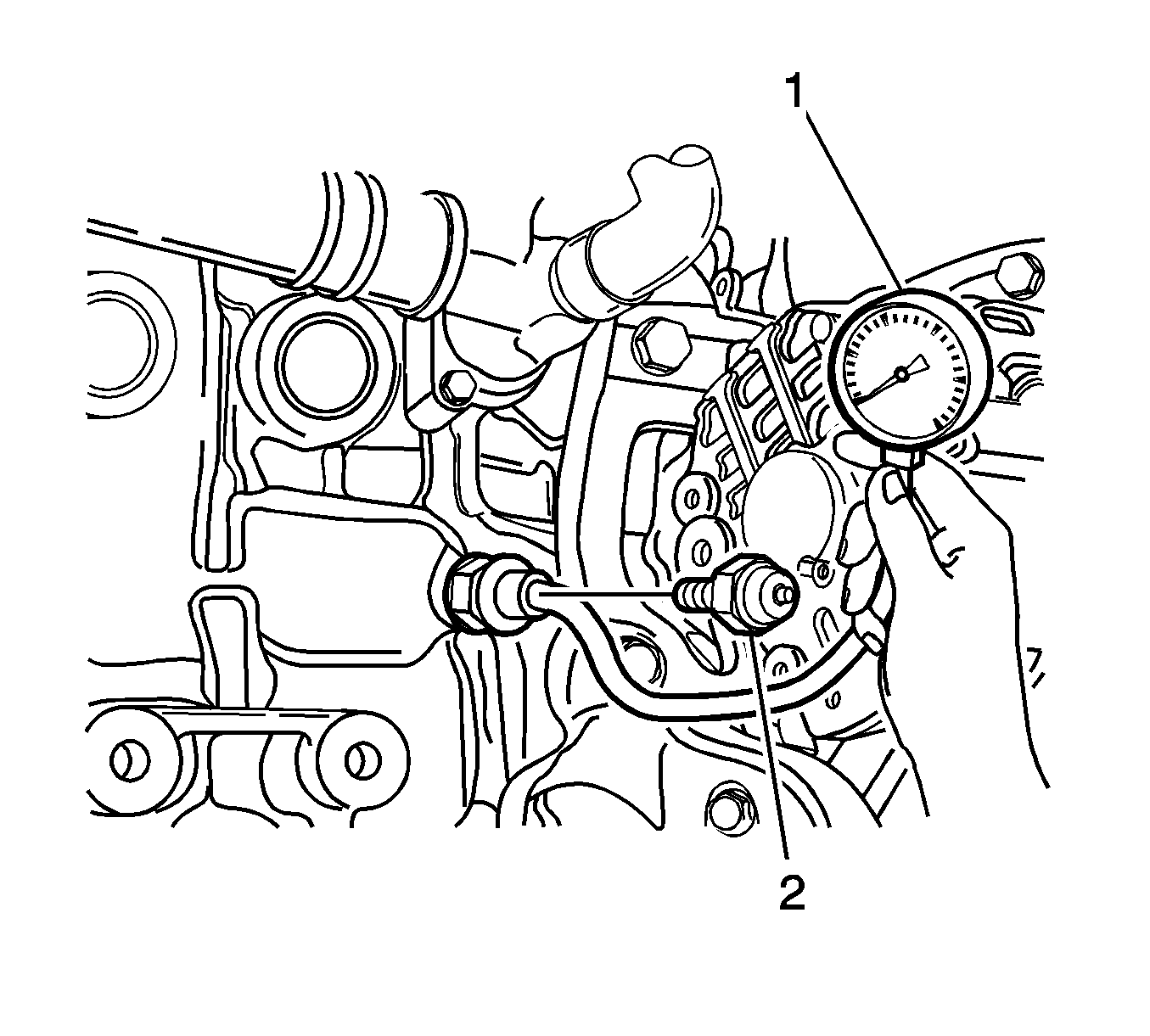Tools Required
J 21867
(KM 498-B) Pressure
Gage
- With the vehicle on a level surface, run the vehicle for a few minutes.
Allow adequate drain down time, 2-3 minutes, and measure for a low oil level.
- If required, add the recommended grade engine oil and fill the crankcase
until the oil level measures full on the oil level indicator.
- Run the engine briefly, 10-15 seconds, and verify low
or no oil pressure on the vehicle gage or light.
- Listen for a noisy valve train or a knocking noise.
- Inspect for the following:
| • | Oil diluted by the following: |
| • | Malfunctioning oil filter bypass valve |
| • | Incorrect or faulty oil pressure gage |
| • | Incorrect or faulty oil pressure gage sensor |
| • | Improper engine oil viscosity for the expected temperature |

- Remove
the oil pressure gage sensor.
- Install the
J 21867
(1) in place of the oil pressure sensor.
- Start the engine and then allow the engine to reach normal operation temperature.
- Measure the engine oil pressure.
Important: The minimum oil pressure at idle should be
30 kPa (8.88 psi). The minimum oil pressure at 2000 rpm
should be 250 kPa (35 psi).
- If the engine oil pressure is below specifications, inspect the engine for one
or more of the following:
| • | Loose oil filter adapter bolts |
| • | Missing or damaged oil filter adapter O-ring seal or seals |
| • | Loose oil pump-to-engine block bolts |
| • | Loose, plugged or damaged oil pump screen |
| • | Missing or damaged oil pump screen O-ring seal |
| • | Damage or leak in the oil pump screen suction tube |
| • | Malfunctioning oil pump pressure regulator valve |
| • | Missing or incorrectly installed oil gallery plugs |
| • | Loose camshaft intermediate drive shaft bolts |
| • | Excessive bearing clearance for the following: |
| - | Camshaft intermediate drive shaft sprocket |
| • | Cracked, porous or restricted oil galleries |
- Repair or replace components as necessary.

